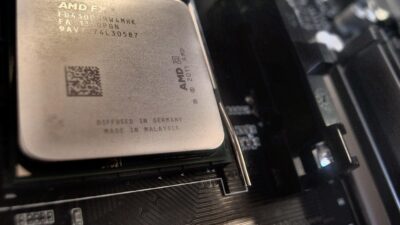NVIDIA Corporation, a global leader in graphics processing technology, has become synonymous with innovation and transformation across multiple tech domains. Originally recognized for its groundbreaking work in the field of graphics cards, NVIDIA has since expanded its influence into artificial intelligence (AI), deep learning, and high-performance computing. This article delves into how NVIDIA is revolutionizing graphics and AI processing, paving the way for advancements that impact industries ranging from gaming to healthcare.
The Birth of a Graphics Giant
Founded in 1993 by Jensen Huang, Chris Malachowsky, and Curtis Priem, NVIDIA began its journey with the mission to cover some of the most complex computational challenges in the realm of visual computing. The introduction of the RIVA series of graphics cards in the late 1990s set the stage for the company’s meteoric rise. However, it was the launch of the GeForce 256 in 1999 that marked a significant achievement, as it claimed the title of the "world’s first GPU" (Graphics Processing Unit). This technology allowed for real-time graphics processing, setting a new standard for the gaming industry.
The GPU: More than Just Graphics
While NVIDIA initially focused on gaming, the company’s interest in GPUs evolved as they realized their potential beyond visual applications. The architecture of GPUs, designed to handle multiple tasks simultaneously through parallel processing, made them ideal for complex computational tasks. As a result, NVIDIA positioned its hardware as a preferred choice for deep learning and AI applications.
The CUDA Revolution
In 2006, NVIDIA launched its CUDA (Compute Unified Device Architecture) platform, enabling developers to utilize GPU power for general-purpose computing. This technology democratized supercomputing, allowing researchers, scientists, and developers to accelerate their applications significantly. With CUDA, users can leverage NVIDIA’s GPUs for tasks like image processing, data analysis, and machine learning, thus enhancing productivity and performance.
Pioneering AI Processing
As the demand for AI and machine learning solutions soared, NVIDIA seized the opportunity to become a key player in this space. The company introduced the NVIDIA DGX systems and the Tesla series, optimized for AI workloads, enabling higher performance in training deep learning models.
Deep Learning and Neural Networks
NVIDIA’s GPUs are not just powerful; they are innovative. The architecture behind its GPUs, particularly with the introduction of the Ampere and Hopper architectures, enhances AI volition, enabling complex neural networks to process large datasets efficiently.
NVIDIA’s Tensor Cores, integrated into their GPUs, specifically target deep learning computation, facilitating quicker matrix calculations essential for training neural networks. As a result, industries are leveraging NVIDIA technology to accelerate new breakthroughs in everything from autonomous vehicles to natural language processing.
The Ecosystem: More Than Hardware
NVIDIA understands that to lead in the AI space, it requires more than just high-performing hardware. The company has invested in creating an entire ecosystem centered on AI development. Initiatives such as the NVIDIA Deep Learning AI framework, which includes tools like TensorRT and the CUDA Toolkit, provides developers with robust resources to optimize machine learning applications. NVIDIA also supports collaborative research networks, connecting academic institutions, and enterprises to push the boundaries of what’s possible with AI.
The Future is Omniverse
NVIDIA’s Omniverse platform represents another leap forward in how graphics and AI intertwine. Built for collaboration and simulation, Omniverse harnesses AI to create realistic, interactive 3D simulations. The platform finds diverse applications, from gaming and film production to architectural visualization and product design. Its use of AI-driven physics and materials enables creators to bring their visions to life with unprecedented realism.
Ethical AI and Responsibility
With great power comes great responsibility, and NVIDIA is committed to ensuring that AI is developed ethically. The company actively participates in discussions around responsible AI and collaborates with stakeholders to address concerns around fairness, transparency, and bias in AI algorithms. By promoting ethical AI, NVIDIA aims to build trust and ensure that technology serves humanity positively.
Conclusion
NVIDIA’s influence extends far beyond gaming; it has become a cornerstone of innovation in both graphics and AI processing. By continually pushing the boundaries of technology, from the GPU’s evolution to launching platforms like CUDA and Omniverse, NVIDIA has established itself as a leader in the tech world. As industry needs evolve and new challenges arise, NVIDIA is undoubtedly positioned to shape the future of computing, empowering breakthroughs across countless fields, thus revolutionizing how we think about graphics and artificial intelligence.


